 Some people, including members of the U.S. Supreme Court, think that the U.S. stole the Black Hills. In 1868, long before the carving began, the U.S. Government promised in a treaty to let the Sioux Nation tribes keep the Black Hills, including the Rushmore area. But in 1874, gold was found in those hills (and confirmed by Lt. Col. George Custer). After that, the U.S. Government and prospectors grabbed back the land and forced the Lakota elsewhere. On July 23, 1980, the Supreme Court found that land grab unconstitutional and ordered federal compensation of more than $105 million to the Sioux to settle the case -- but American Indian leaders said they would rather have the Black Hills. It is still unresolved. Some people, including members of the U.S. Supreme Court, think that the U.S. stole the Black Hills. In 1868, long before the carving began, the U.S. Government promised in a treaty to let the Sioux Nation tribes keep the Black Hills, including the Rushmore area. But in 1874, gold was found in those hills (and confirmed by Lt. Col. George Custer). After that, the U.S. Government and prospectors grabbed back the land and forced the Lakota elsewhere. On July 23, 1980, the Supreme Court found that land grab unconstitutional and ordered federal compensation of more than $105 million to the Sioux to settle the case -- but American Indian leaders said they would rather have the Black Hills. It is still unresolved.
|
| above quote from http://www.journalnow.com/relishnow/travel/road_trips/article_902af385-8a9a-5766-8c87-5673317be11c.html |
 |
Welcome to South Dakota
and Mount Rushmore National Memorial - 1987 signs |
|
|
 Mount
Rushmore National Memorial is free. Sort of.
Although admission to Mount Rushmore National Memorial is free, it cost
the two RV Gypsies $10 to park in the lot. The faces of four American
presidents: George Washington, Thomas Jefferson, Theodore Roosevelt
and Abraham Lincoln are carved from a granite mountainside high above
the treetops of the Black Hills. Carving took 14 years to complete and
cost $1 million. (The federal government paid about 84 percent of it).
The chiseling was the least of the work. About 90 percent of the carving
at the mountain was done by dynamite. Those blasts removed about 450,000
tons of fine-grained granite from the mountain. (Prices mentioned
on this website are always subject to change, and the two RV Gypsies
have no control over prices, hours, or closings) Mount
Rushmore National Memorial is free. Sort of.
Although admission to Mount Rushmore National Memorial is free, it cost
the two RV Gypsies $10 to park in the lot. The faces of four American
presidents: George Washington, Thomas Jefferson, Theodore Roosevelt
and Abraham Lincoln are carved from a granite mountainside high above
the treetops of the Black Hills. Carving took 14 years to complete and
cost $1 million. (The federal government paid about 84 percent of it).
The chiseling was the least of the work. About 90 percent of the carving
at the mountain was done by dynamite. Those blasts removed about 450,000
tons of fine-grained granite from the mountain. (Prices mentioned
on this website are always subject to change, and the two RV Gypsies
have no control over prices, hours, or closings)
|
Below: Karen Duquette by
the sign in 2013 and the sign in 1987 |
|
|
Below: The Avenue of Flags
at Mount Rushmore leads from the Concession Building to the Grandview
Terrace. The flags of the 50 USA states plus 6 territories fly below
the memorial; District of Columbia, Guam (a Territory), Puerto Rico
(Commonwealth), American Samoa (Territory), Virgin Islands (Territory),
Northern Mariana Islands (Commonwealth). |
|
|
 Sculptor Gutzon Borglum began drilling into the 5,725-foot mountain in 1927. Creation of the Shrine of Democracy took 14 years and cost a mere $1 million, though it's now deemed priceless. Borglum was 60 when he started work on the mountain in 1927. Borglum had devoted years to a Confederate commemorative carving at Stone Mountain. After his death in 1941 (the same year that Mount Rushmore was completed), he was buried at Forest Lawn Memorial Park Cemetery in Glendale, Calif. Sculptor Gutzon Borglum began drilling into the 5,725-foot mountain in 1927. Creation of the Shrine of Democracy took 14 years and cost a mere $1 million, though it's now deemed priceless. Borglum was 60 when he started work on the mountain in 1927. Borglum had devoted years to a Confederate commemorative carving at Stone Mountain. After his death in 1941 (the same year that Mount Rushmore was completed), he was buried at Forest Lawn Memorial Park Cemetery in Glendale, Calif.
|
|
|
Below: The amphitheater
below Mount Rushmore. |
|
|
Below: South Dakota's Black
Hills provide the backdrop for Mount Rushmore. These 60-foot high faces,
500 feet up, look out over a setting of pine, spruce, birch, and aspen
in the clear western air. |
|
|
|
|
Below: The Avenue of Flags
provides direct and easy access to the Grandview Terrace and Presidential
Trail, a half-mile walking trail that offers spectacular views of the
mountain sculpture. The two RV Gypsies walked the Presidential Trail
as a great way to get a closer view and a variety of views of Mount
Rushmore. The trail makes a loop from the south side of the Grand View
Terrace to the Grand View Terrace and Sculptor's Studio on the north
side. |
|
|
|
|
Below: While walking along
the President's Trail, the two RV Gypsies saw two rocks leaning against
each other and they ventured into the opening and got a great view of
George Washington. |
|
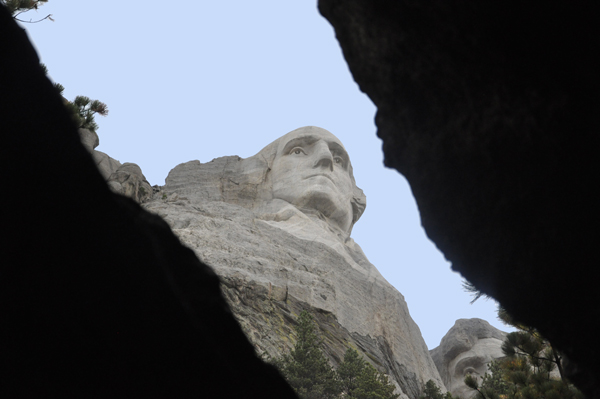 |
Just outside of the leaning rocks, the two RV Gypsies really liked the different view of George Washington. |
|
|
|
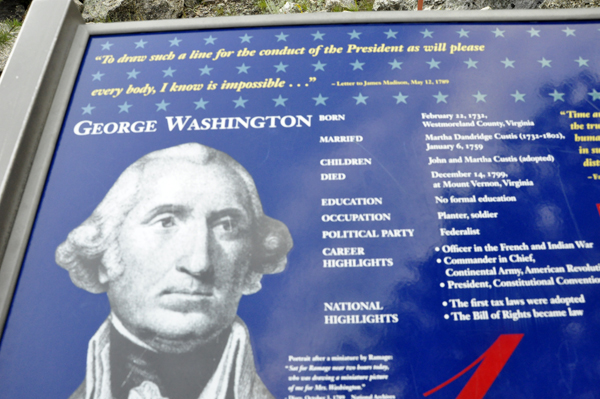 |
Each eye is 11 feet wide. The pupil of each eye is a 20-inch shaft of granite. When the sunlight shines on the flat end of the shaft, the eye appears to twinkle. The nostrils are only slight indentations in the rock. The shadows make them look hollow. Washington's nose is 21 feet long, the other noses are 20 feet long. Washington's mouth is 18 feet wide. |
|
|
Below: Thomas Jefferson is
a do-over. At first, sculptor Gutzon Borglum put Thomas Jefferson on
the far left. But after 18 months of carving, Borglum changed plans
because the rock was weak, so they dynamited Jefferson off the mountain
and put him on the other side of Washington. He carved Lincoln on the
end where the rock would be more stable, and that is why Lincoln is
so far away from the other three presidents. |
|
|
Below: Theodore Roosevelt,
the most controversial choice among the four Rushmore presidents, died
only eight years before the blasting began. Theodore Roosevelt is not
on a United States coin, unlike the other three Presidents. |
|
Below: The two
RV Gypsies glanced back at the Grandview Terrace and amphitheater seating
from the Presidential Trail, and then they started down the stairs to
the sculpture studio. This was a very strenuous trail. After completing
the trail, the two RV Gypsies were exhausted and knew it was time to
leave Mount Rushmore. |
|
|
Below: Park Rangers led an
inspirational and patriotic program focusing on the presidents and the
nation's history. The program ended with a film, veteran's tribute and
lighting of the monument. Located in the park's outdoor amphitheater
during the summer, weather permitting. |
|
|
Below: After leaving Mount
Rushmore in 2013, the two RV Gypsies pulled off to the side of the road
for a "Profile Look" |
|
|
|
|
|
|
Below: Flashback photos from 1987 |
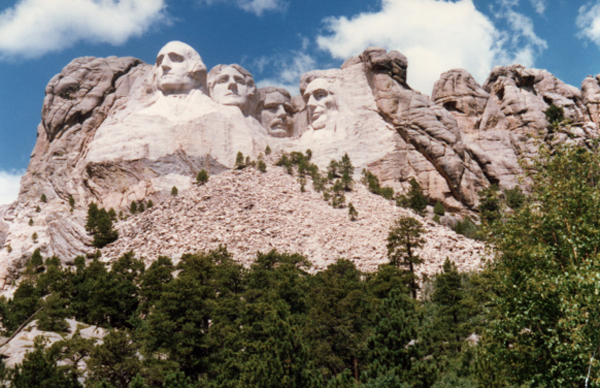 |
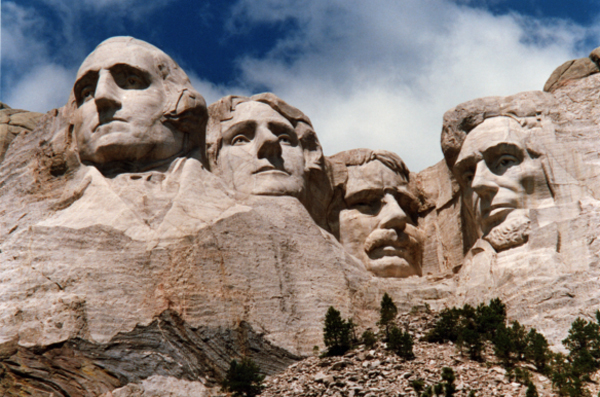 |
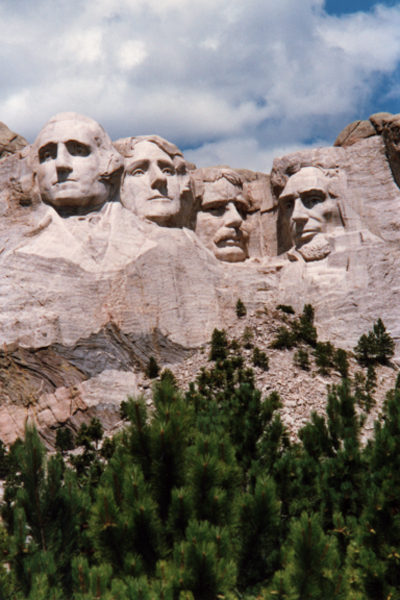 |


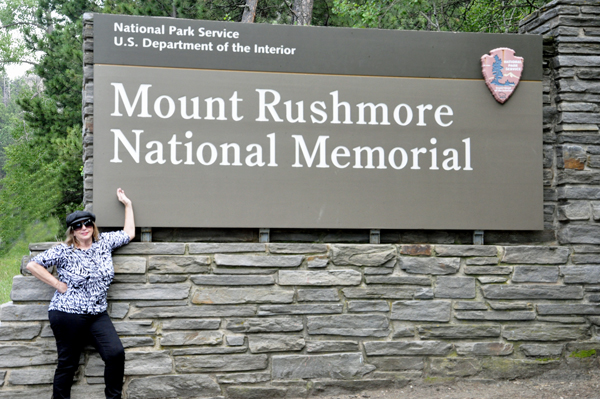
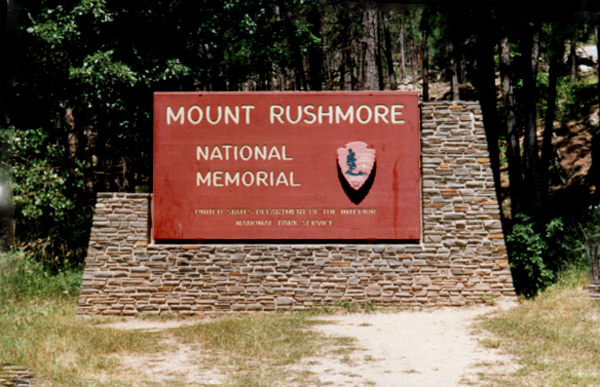
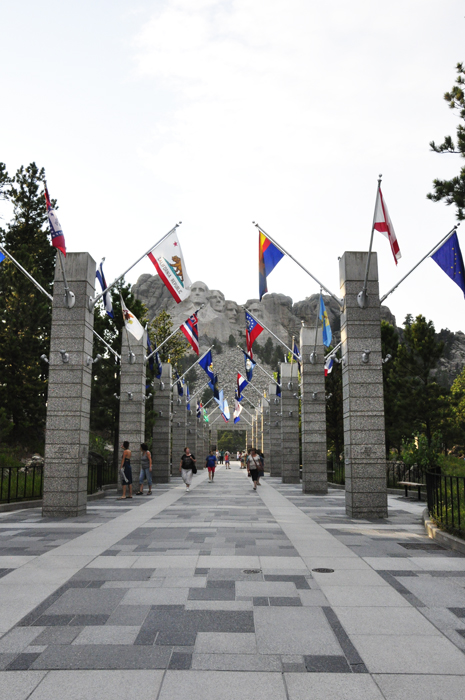
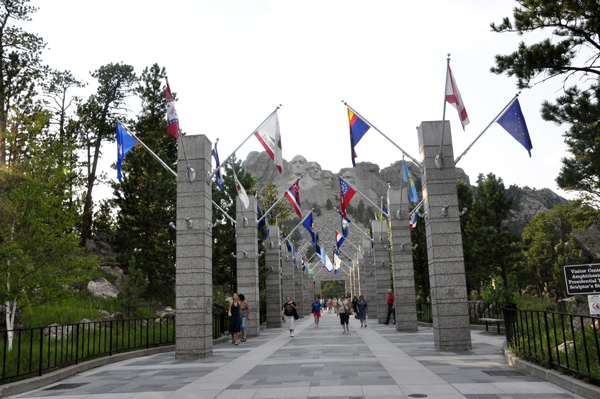
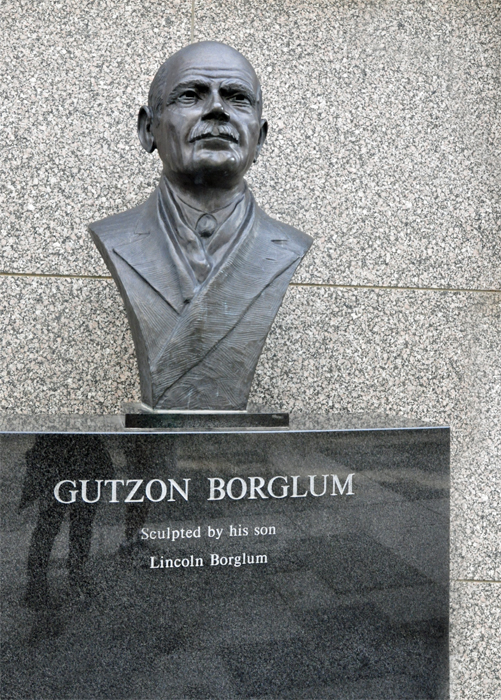
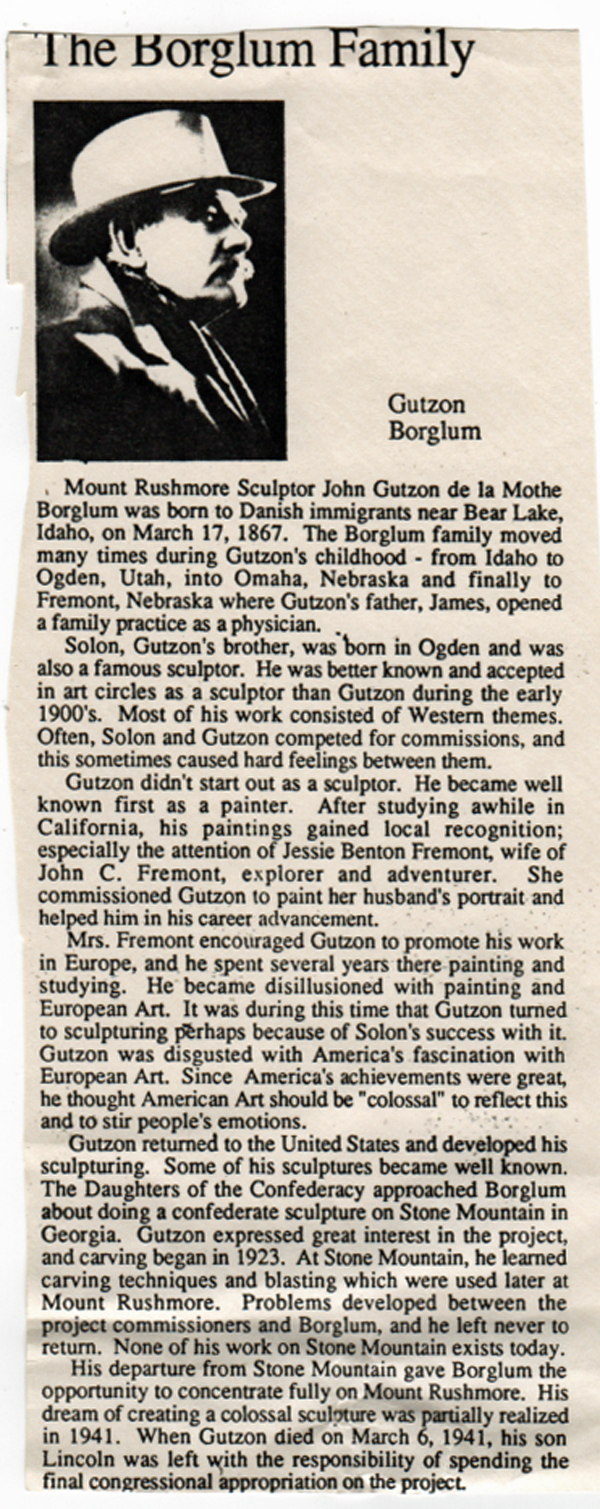
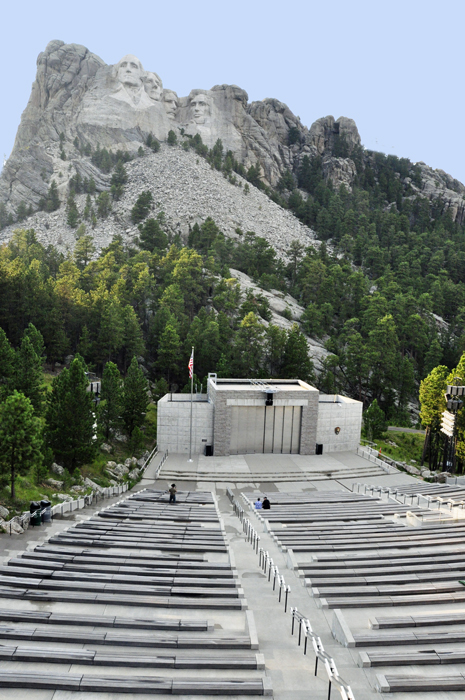
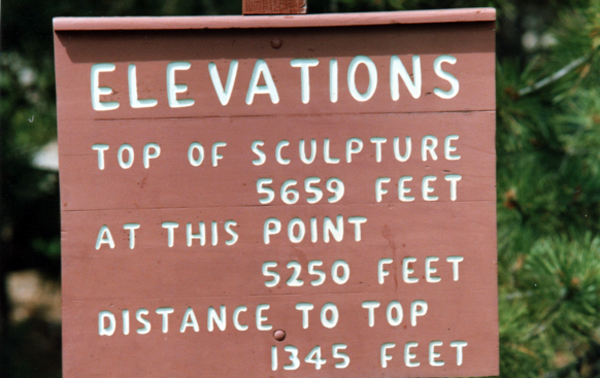
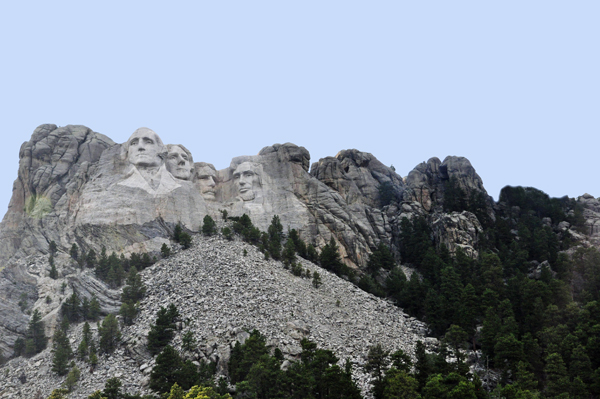
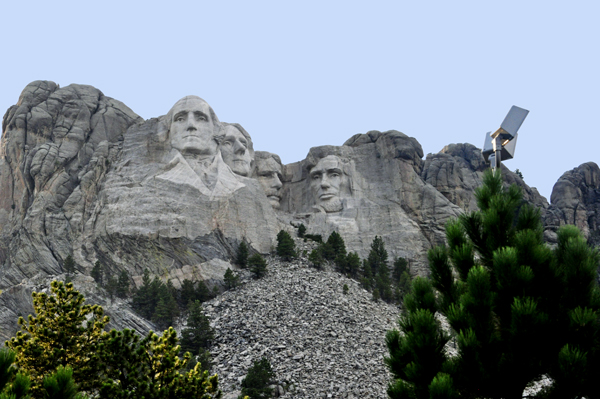
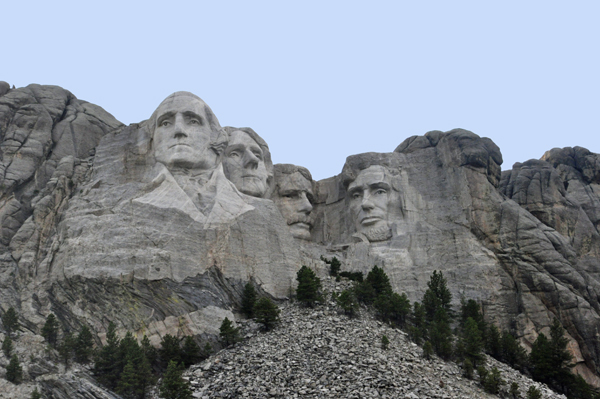
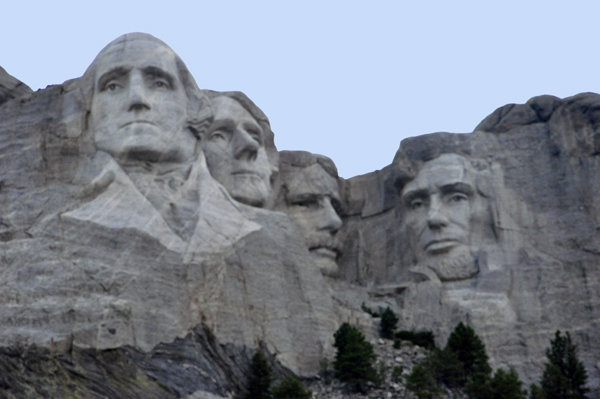


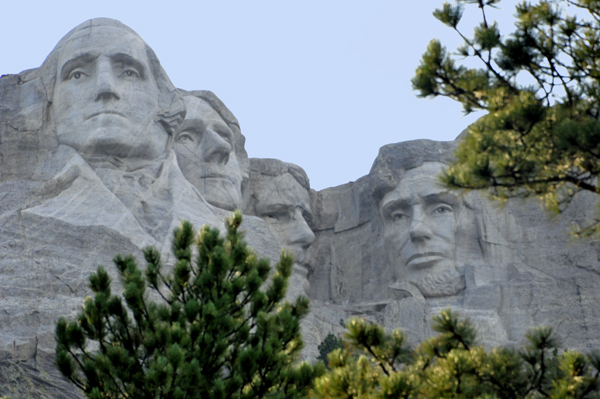
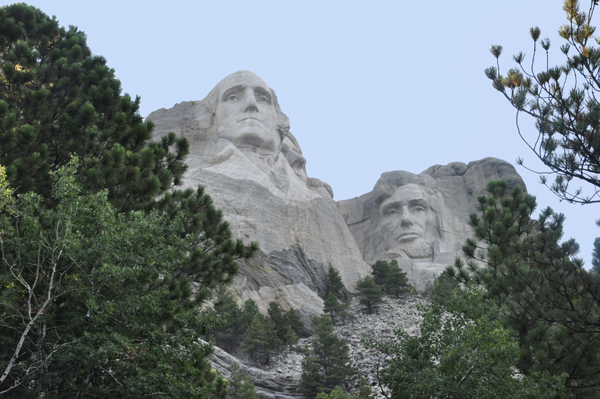
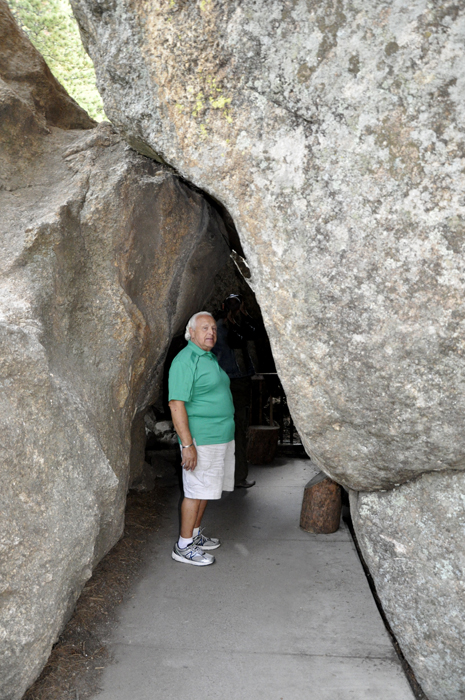

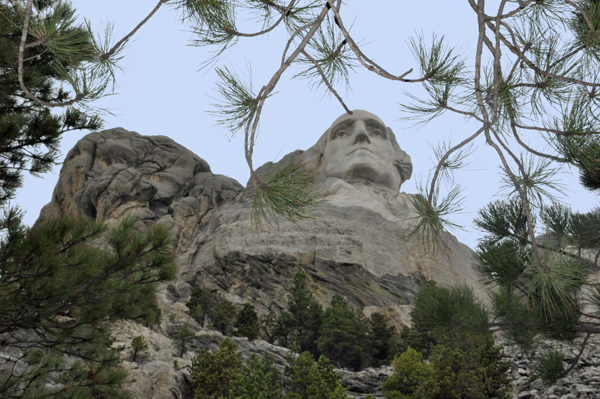
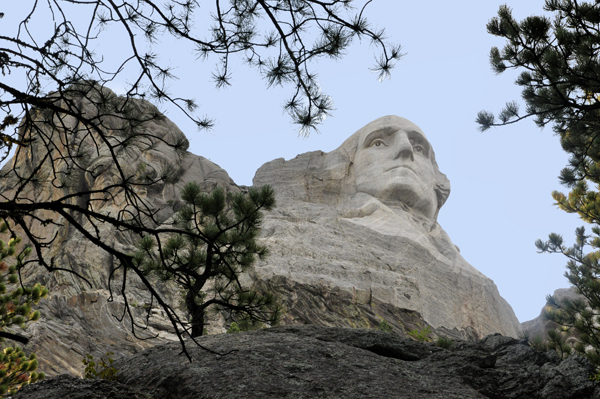
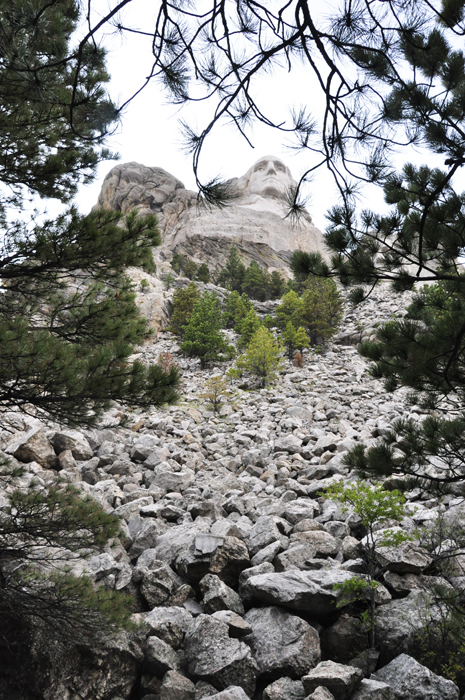

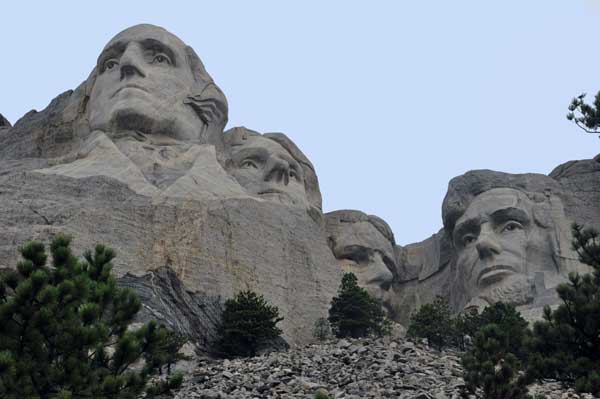
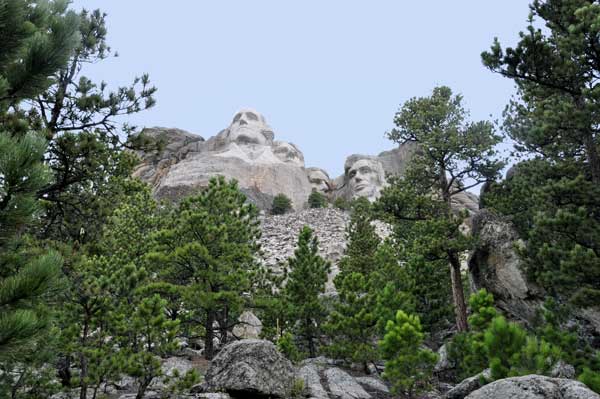
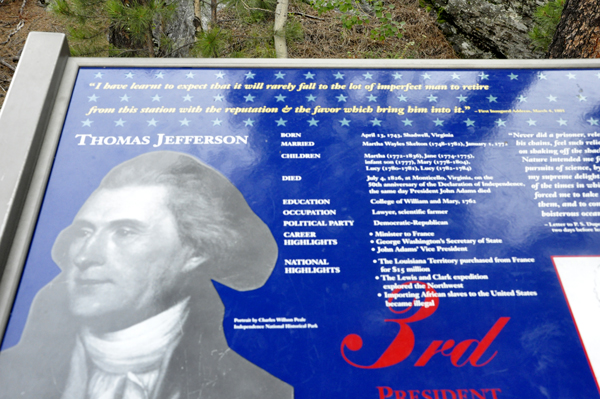
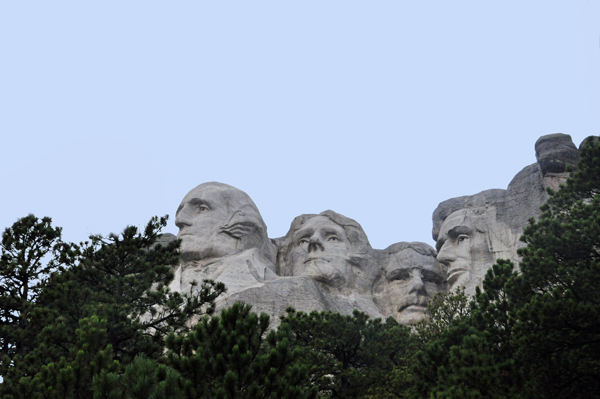
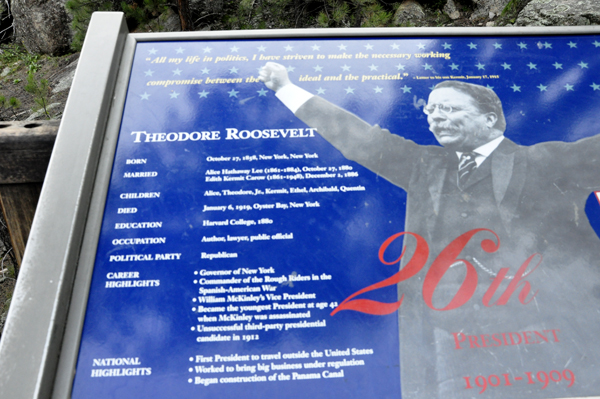
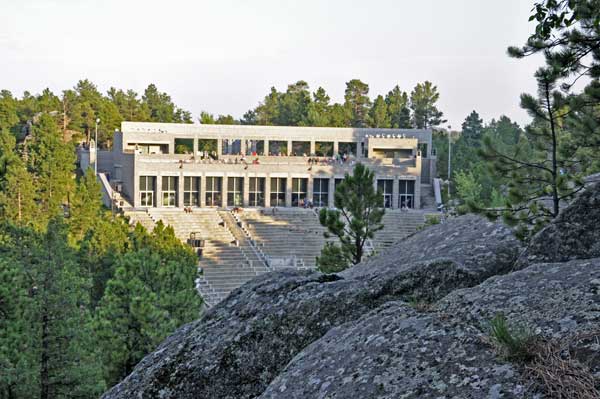
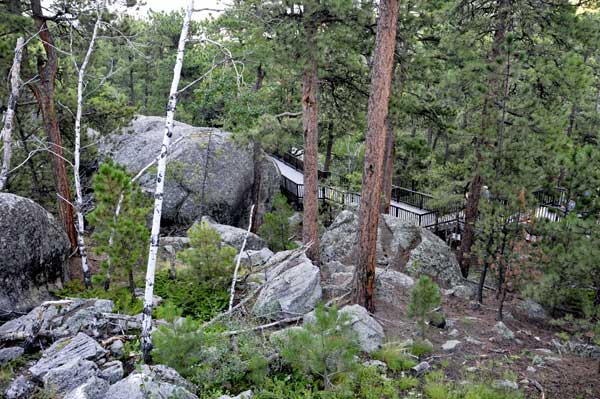

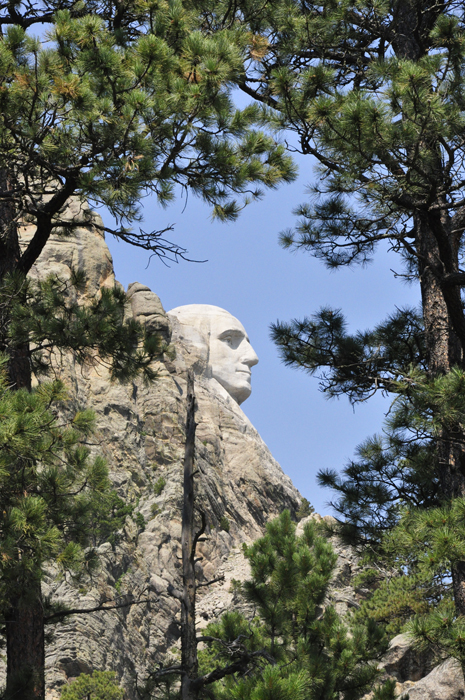
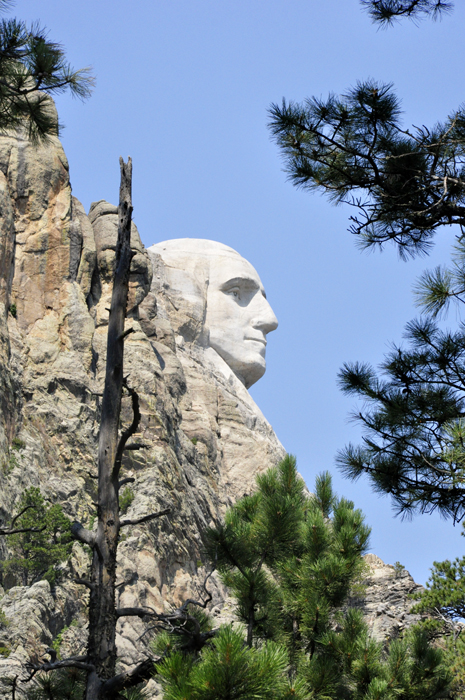
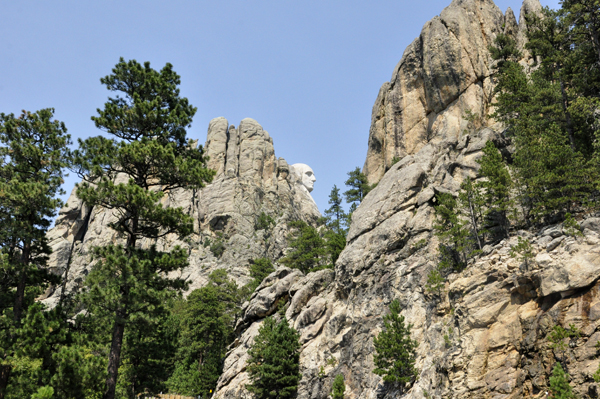
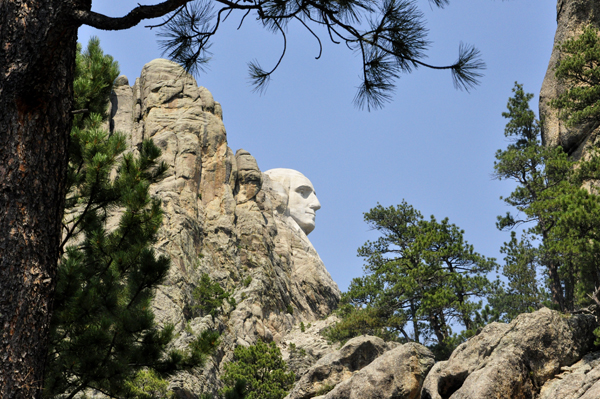
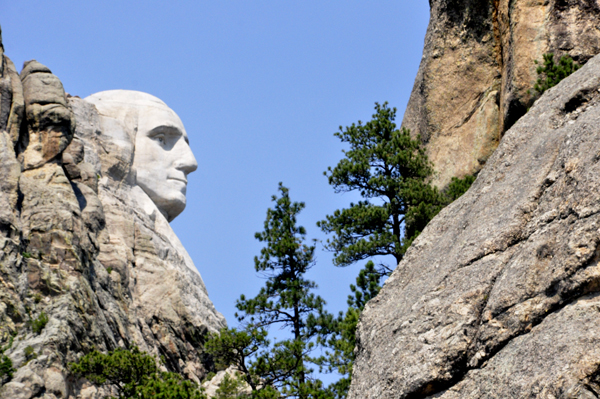



























 Some people, including members of the U.S. Supreme Court, think that the U.S. stole the Black Hills. In 1868, long before the carving began, the U.S. Government promised in a treaty to let the Sioux Nation tribes keep the Black Hills, including the Rushmore area. But in 1874, gold was found in those hills (and confirmed by Lt. Col. George Custer). After that, the U.S. Government and prospectors grabbed back the land and forced the Lakota elsewhere. On July 23, 1980, the Supreme Court found that land grab unconstitutional and ordered federal compensation of more than $105 million to the Sioux to settle the case -- but American Indian leaders said they would rather have the Black Hills. It is still unresolved.
Some people, including members of the U.S. Supreme Court, think that the U.S. stole the Black Hills. In 1868, long before the carving began, the U.S. Government promised in a treaty to let the Sioux Nation tribes keep the Black Hills, including the Rushmore area. But in 1874, gold was found in those hills (and confirmed by Lt. Col. George Custer). After that, the U.S. Government and prospectors grabbed back the land and forced the Lakota elsewhere. On July 23, 1980, the Supreme Court found that land grab unconstitutional and ordered federal compensation of more than $105 million to the Sioux to settle the case -- but American Indian leaders said they would rather have the Black Hills. It is still unresolved. If you have already seen all of the sites in South Dakota, please continue
on to
If you have already seen all of the sites in South Dakota, please continue
on to 
